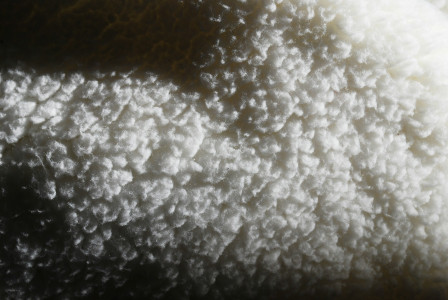Library and support resources
21 October 2025
Materials market report 2025: tracking global fibre and raw material trends
Library and support resources
21 October 2025
Investments and funding
R&I, techniques and technological solutions
Sustainable competitiveness
+10 more
Login / create an account to be able to react
-
1 view

Textile Exchange’s Materials Market Report 2025 offers a comprehensive analysis of global fibre and raw material production. The 12th edition captures the latest market shifts, showing fibre production reaching 132 million tonnes in 2024, with synthetics dominating and recycled fibres remaining under 8% of the total.
Topics
Albania
Armenia
Austria
Belgium
Bosnia and Herzegovina
Bulgaria
Croatia
Cyprus
Czechia
Denmark
Estonia
EU-27
Finland
France
Georgia
Germany
Greece
Hungary
Iceland
Ireland
Italy
Kosovo
Latvia
Liechtenstein
Lithuania
Luxembourg
Malta
Moldova
Montenegro
Netherlands
North Macedonia
Norway
Poland
Portugal
Romania
Serbia
Slovakia
Slovenia
Spain
Sweden
Switzerland
Türkiye
Ukraine
Other
Academic / Research and VET Institutions
Company with 250 or more employees
Consumer Organisations
Cultural and Heritage Organisations
Destination Management & Marketing Organisations
EU Institutions
Financial Institutions and Investors
Industry Associations and Chambers of Commerce
International Organisations
Local Authorities
Media / Journalist Organisations
National authorities
Networks and Federations / Confederations
NGOs / Non-profits
Regional Authorities
SMEs (a company with less than 250 employees)
-
Transition Pathway's building blocks
-
-
Investments and funding
-
R&I, techniques and technological solutions
-
Sustainable competitiveness
-
-
Industrial ecosystems
-
-
Energy intensive industries
-
Energy-renewables
-
Textile
-
-
Textiles ecosystem areas
-
-
Fibres, yarns and fabrics
-
Apparel and clothing accessories
-
Household/interior textiles
-
Technical textiles
-
Research and Innovation
-
Waste management, reuse and repair
-
Not area specific (interested in more than one of the above)
-
Share
Published in September 2025 by Textile Exchange, the Materials Market Report 2025 provides in-depth insights into global fibre and raw material production, including plant, animal, synthetic, and manmade cellulosic fibres. Since its first release in 2013, the report has become an essential industry reference, offering robust data to help stakeholders monitor progress toward sustainability goals. It compiles verified secondary data from international organisations, research bodies, and standard setters to map material production trends and their environmental implications.
Key Findings and Insights:
1. Record fibre production growth
Global fibre output rose from 125 million tonnes in 2023 to 132 million tonnes in 2024, marking an all-time high. Synthetic fibres, led by polyester, accounted for 69% of total production, underscoring the industry’s heavy reliance on fossil-based materials. Despite commitments aligned with the Paris Agreement, current trends project growth to 169 million tonnes by 2030 if business continues as usual.
2. Recycled fibres: slow but steady progress
Recycled fibres maintained a 7.6% market share in 2024, with polyester dominating at 6.9%. However, less than 1% of the global fibre market derived from pre- and post-consumer textile recycling. Wool had the second-highest recycled content at 7%, while cotton and manmade cellulosic fibres stood near 1%. Most recycled polyester still originates from plastic bottles rather than textile waste.
3. Material composition and shifts
- Polyester production reached 78 million tonnes (59% market share).
- Cotton decreased slightly to 24.5 million tonnes (19% share).
- Manmade cellulosic fibres (MMCFs) grew to 8.4 million tonnes (6%), with 65 - 70% sourced from FSC or PEFC-certified feedstock.
- Wool, mohair, cashmere, and alpaca together made up less than 1% of global fibre output.
4. Certified and sustainable program uptake
Better Cotton, Responsible Brazilian Cotton (ABR), and myBMP together accounted for 34% of all virgin cotton production. For mohair, the Responsible Mohair Standard covered 50% of the global market, while Responsible Alpaca Standard reached 7% and Responsible Wool Standard 4.3%. Certification uptake varied across fibres, reflecting ongoing efforts toward greater traceability and responsible sourcing.
5. Emerging alternatives and innovation
The report highlights growing research into biobased and CO₂-derived polyester, as well as chemical recycling for blended textiles. Despite limited scale, these innovations offer potential to reduce dependence on fossil-based synthetics.
The Materials Market Report 2025 reinforces that global fibre production continues to expand, driven largely by virgin synthetics. While recycled content and certified programs are advancing, transformative change remains limited by scale, technology, and data gaps. The report underscores the need for collective industry action to decouple material growth from environmental impact.
Comments (0)
See also
Small mid‑caps: bridging the gap between SMEs and large companies
- Categories
- Infrastructure Investments and funding R&I, techniques and technological solutions +28 more
The EU’s vision for sustainable fashion: transforming the textiles sector by 2030
- Categories
- Infrastructure Investments and funding R&I, techniques and technological solutions +28 more
Transition Pathway for a resilient, sustainable, and digital textiles ecosystem
- Categories
- Infrastructure Investments and funding R&I, techniques and technological solutions +28 more




